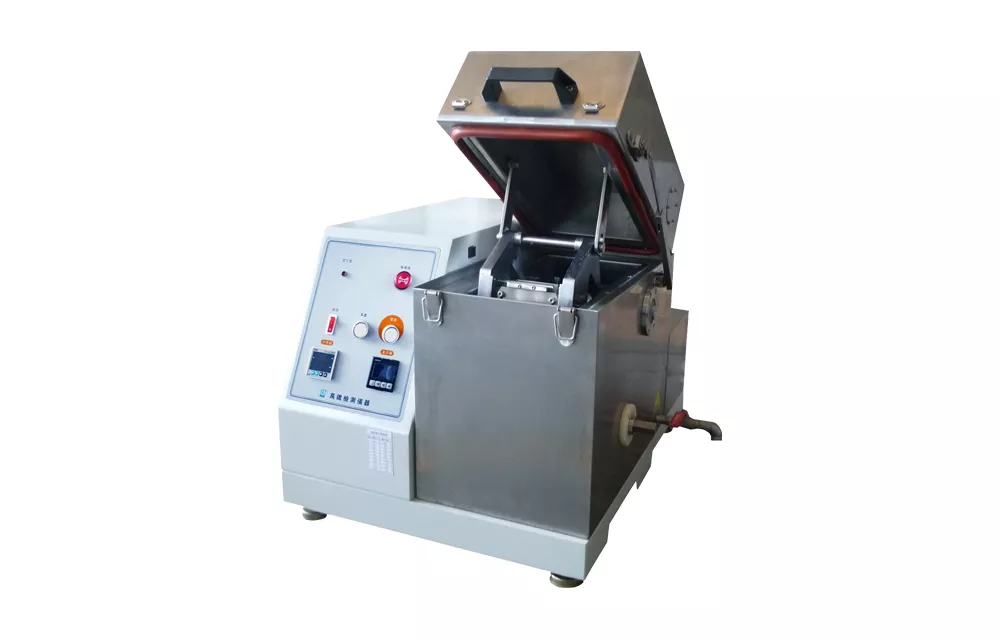
- The GT-7061-1 is specifically designed to determine the lowest temperature at which plastics or vulcanized rubber do not exhibit brittle failure when subjected to impact under specified conditions.
- This instrument is used to evaluate the ability of materials to withstand cold environments for industrial applications.
-
Standards
- ASTM D 746-2004-Type A
- ASTM D746-2004-Type B
- BS 903 A25:1992
- GB/T 5470-2008(Type B)
- ISO 812:91
- ISO 974:2000
- JIS C 3005:2000
- JIS K 6723:1995
- JIS K 7216:1980(Type A)
- JIS K 7216:1980(Type B)
- ASTM D 2137-05
- GB/T 15256-1994
- AATCC 127
Principle
To conduct brittleness temperature testing, test specimens are immersed in a low-temperature bath for a specified time at a defined test temperature. They are then subjected to impact to evaluate their brittleness temperature. The brittleness temperature offers valuable insights into the durability and reliability of materials in extreme environments, enabling manufacturers to make adjustment to improve product design and material selection.
Wide applicability:
Well-suited for a wide range of industries such as plastics, rubber, material science, petrochemical, chemistry, engineering, construction, and industrial manufacturing.
Authentic simulation:
Simulates impact scenarios in cold environments to assess materials' performance and durability under these conditions.
Impact resistance assessment:
Enables manufacturers to determine the temperature at which specimens fail under impact testing.
Quality assurance:
Helps manufacturers verify the consistency of material performance during production, ensuring the product meets specific requirements.
Product design optimization:
Assists manufacturers in optimizing materials and product design through the assessment of their brittleness temperature.
Standard conformity:
Ensures that products meet industry standards and satisfy quality expectations in the market.
-

Rapid cooling
Liquid nitrogen cools specimens at a rapid rate, making it ideal for quick cooling applications.

Intuitive interface
The intuitive and easy-to-use interface allows operators to quickly learn how to operate the instrument.

Benchtop design
Designed with a compact structure for space-saving, making it ideal for use in laboratories with limited space.
-
 左右滑動看表格
左右滑動看表格Temp. range Ambient temp. to -120℃ (LN2 cooling) Radius of striking edge 1.6±0.01 mm Impact speed 2.0±0.2 m/s Specimen clamp 4 sets (each set can hold up to 5 specimens) Dimensions (W×D×H) 65 cm × 68 cm × 55 cm (approx.) Power 1∮, AC 220V, 60Hz (or specify)
*Product design and specifications are subject to change without notice.
-
Details
Standards
- ASTM D 746-2004-Type A
- ASTM D746-2004-Type B
- BS 903 A25:1992
- GB/T 5470-2008(Type B)
- ISO 812:91
- ISO 974:2000
- JIS C 3005:2000
- JIS K 6723:1995
- JIS K 7216:1980(Type A)
- JIS K 7216:1980(Type B)
- ASTM D 2137-05
- GB/T 15256-1994
- AATCC 127
Principle
To conduct brittleness temperature testing, test specimens are immersed in a low-temperature bath for a specified time at a defined test temperature. They are then subjected to impact to evaluate their brittleness temperature. The brittleness temperature offers valuable insights into the durability and reliability of materials in extreme environments, enabling manufacturers to make adjustment to improve product design and material selection.
Wide applicability:
Well-suited for a wide range of industries such as plastics, rubber, material science, petrochemical, chemistry, engineering, construction, and industrial manufacturing.
Authentic simulation:
Simulates impact scenarios in cold environments to assess materials' performance and durability under these conditions.
Impact resistance assessment:
Enables manufacturers to determine the temperature at which specimens fail under impact testing.
Quality assurance:
Helps manufacturers verify the consistency of material performance during production, ensuring the product meets specific requirements.
Product design optimization:
Assists manufacturers in optimizing materials and product design through the assessment of their brittleness temperature.
Standard conformity:
Ensures that products meet industry standards and satisfy quality expectations in the market.
-
Features

Rapid cooling
Liquid nitrogen cools specimens at a rapid rate, making it ideal for quick cooling applications.

Intuitive interface
The intuitive and easy-to-use interface allows operators to quickly learn how to operate the instrument.

Benchtop design
Designed with a compact structure for space-saving, making it ideal for use in laboratories with limited space.
-
Specifications
 左右滑動看表格
左右滑動看表格Temp. range Ambient temp. to -120℃ (LN2 cooling) Radius of striking edge 1.6±0.01 mm Impact speed 2.0±0.2 m/s Specimen clamp 4 sets (each set can hold up to 5 specimens) Dimensions (W×D×H) 65 cm × 68 cm × 55 cm (approx.) Power 1∮, AC 220V, 60Hz (or specify)
*Product design and specifications are subject to change without notice.

